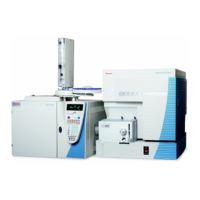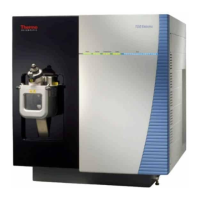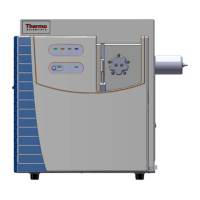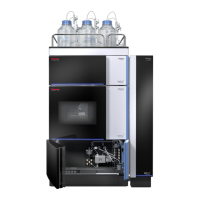2
Functional Description
Mass Spectrometer
Thermo Scientific TSQ Quantum XLS Series User Guide 41
Vacuum Manifold
The vacuum manifold encloses the ion source, ion optics, mass analyzer, and ion detection
system assemblies. The vacuum manifold is a thick-walled, aluminum chamber with two
removable side cover plates, with openings on the front, sides, and top, and various electrical
feedthroughs and gas inlets.
The main vacuum manifold is divided into two chambers by a baffle. See Figure 27. The high
vacuum port of the turbomolecular pump evacuates the region inside the first chamber, called
the analyzer region, to less than 10
–
5
Torr. The turbomolecular pump then discharges into the
forepump through the foreline.
The region inside the second chamber, called the Q0 quadrupole region, is evacuated to
1 mTorr by the interstage port of the turbomolecular vacuum pump.
A second vacuum manifold houses the ion source, which is open to the Q0 quadrupole
chamber. The interstage port of the turbomolecular pump also evacuates the ion source
region.
When CID is turned on, the collision cell chamber, inside the analyzer chamber, has a
user-controlled argon pressure of between 1 and 4 mTorr. The forepump evacuates the argon
in the collision cell when CID is turned off.
Two removable side cover plates on the left side of the vacuum manifold allow access to the
Q0 ion optics, mass analyzer, and ion detection system. Two electrically conductive O-rings
provide a vacuum-tight seal between the side cover plates and the vacuum manifold.

